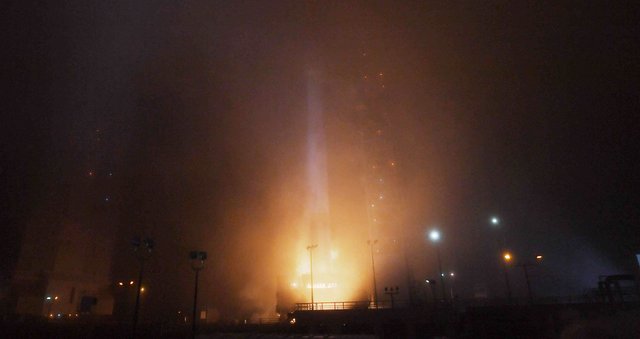Earthquakes on Mars ?, NASA launched the InSight probe to find out
As Earth and Mars formed in a similar way 4,500 million years ago, the space agency hopes that the mission helps to understand why both planets are so different.

NASA is preparing to launch its first mission to Mars since 2012 with the launch on Saturday of the InSight probe, which will study its tectonic activity to unravel the mystery of the formation of the rocky planets.
The launch of the vehicle called Interior Exploration Using Seismic Investigations, Geodesy and Heat Transport (InSight) is scheduled for 11:05 on Saturday from the Vandenberg base of the US Air Force in California.
It was originally scheduled for 2016, but the discovery of leaks in one of the instruments a few months before the date forced the postponement. The favorable launch windows for Mars occur only every two years.
You may be interested: NASA announces mission to Mars in 2020
Si todo se desarrolla de acuerdo con el plan esta vez, la sonda debería llegar a su destino el 26 de noviembre, cuando se convertiría en el primer aparato de la NASA en posarse en Marte desde que lo hizo el vehículo explorador Curiosity en 2012.
Como la Tierra y Marte probablemente se formaron de forma similar hace 4.500 millones de años, la agencia espacial estadounidense espera que la misión ayude a comprender por qué ambos planetas son tan diferentes.
"Cómo llegamos de una bola de rocas con pocos relieves a un planeta que puede o no sostener la vida es una cuestión crucial en la ciencia planetaria", dijo Bruce Banerdt, el principal investigador de InSight en el Jet Propulsion Laboratory de la NASA en Pasadena, California.
"Nos gustaría poder entender qué sucedió", afirmó.
On Earth, this evolution has been hidden by billions of years of earthquakes and movement of rocks melted in the mantle, the scientist explained.
But Mars, the fourth planet from the Sun that is smaller and less geologically active than our planet, could hold some clues about the matter.
You can also see: The surprising reason why Mars lost its water and stopped looking like Earth
InSight will collect data through three instruments: a seismometer, a device to precisely locate the probe while Mars oscillates on its axis of rotation and a heat flow sensor inserted 5 meters into the Martian subsoil.
The United States will invest a total of 813.8 million dollars in the launching of the rocket with the probe, while France and Germany consecrated 180 million dollars to the instruments that will be used for studies on Mars, according to NASA.
In addition, NASA spent $ 18.5 million on a pair of space minibars that will also travel on the rocket.
Called Mars Cube One, or MarCO, these satellites the size of a briefcase "will fly their own way to Mars behind InSight" and will test new communications equipment in deep space, the US agency said.
The mission of InSight will be to first detect the "marsmotos" that, according to the description of NASA, are "like a flash that illuminates the internal structure of the planet".
Scientists expect to register up to a hundred earthquakes during the course of the mission. Most should be less than 6 on the open Richter scale.
Studying how seismic waves travel through the crust, mantle and core of the red planet could help them know more about how different layers are made and how thick they are.
The Seismic Experiment for Interior Structure (SEIS) was designed by the National Center for Space Studies (CNES) of France, while the heat detector Heat and Physical Properties Package (HP3) is a collaboration between the German space agencies, DLR, and Polish, CBK.
NASA's Viking probes launched in the late 1970s had seismometers, of which only one had worked, but it was much less sensitive because it was attached to the top of the probe.
We recommend: The rocket that put humans closer to Mars
This time, the InSight seismometer will be placed directly on the ground thanks to a robotic arm.
InSight aims to be the first NASA instrument to land on Mars since the Mars Science Laboratory, better known as Curiosity, which is still there working five and a half years ago.
A wonderful round of applause for my friends are: @elguille @hr1 @Booster @steem-bot @Rudro21